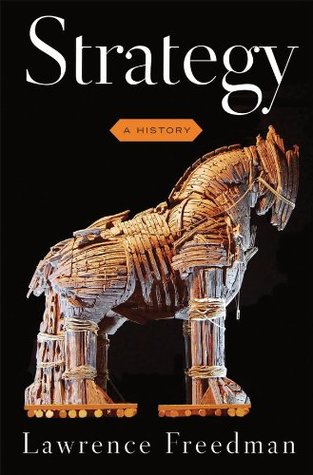More on this book
Community
Kindle Notes & Highlights
distinguished “elementary tactics,” which became “tactics,” from “grand tactics,” which became “strategy.” Guibert wanted a unified theory, raising tactics to “the science of all times, all places and all arms.
strategy
strategy
army’s path from its starting point to its final destination.
tough discipline.
Initially he preferred his wars to be “short and lively,” which required accepting battle. Long wars exhausted a state’s resources as well as its soldiers,
His seizure of Silesia early in his reign, during the War of Austrian Succession, made his repu...
This highlight has been truncated due to consecutive passage length restrictions.
“law of v...
This highlight has been truncated due to consecutive passage length restrictions.
numerical advantage, and direct it against an enemy’s vulnerabilities.
need to launch attacks at the key points where superiority had been achieved, and to reach these points by moving quickly.
Lazar Carnot,
used conscription to create the levée en masse and turned it into a formidable, trained, and disciplined organization. Carnot also showed how a mass army could be used as an offensive instrument by separating it into independent units that could move faster than the enemy, enabling attacks against the flanks and creating opportunities to cut off communications. Most of Napoleon’s generals learned their trade under Carnot.
Napoleon
focus was always on the decisive battle.
bringing superior strength to bear at crucial moments (“God is on the side of the heaviest battalions”); defeating the enemy by destroying his army; viewing strategy as “the art of making use of time and space”; using time to gain strength when weaker; and compensating for physical inferiority with greater resolve, fortitude, and perseverance (“The moral is to the physical as three to one
need to understand the enemy: by fighting too often with one enemy, “you will teach him all your art of war”; never do what the enemy wishes “for this reason alone, that he desires it”; never interrupt an enemy making a mistake; always show confidence, for you can see your own troubles but you cannot see those facing your enemy.12
September 7, 1812,
Although the French came out on top, the Russians did not consider themselves beaten. Moscow was occupied following Borodino, but the Russians refused to agree to peace terms and Napoleon found that he lacked the capacity to sustain his army for any length of time. After five weeks, he began the famous and harsh retreat from Moscow.
Most importantly, he understood that Napoleon wanted battle. If that was what he wanted, that was
“We must avoid big battles until we have fallen right back to our supply lines.
Despite his tired and depleted force, Napoleon stuck with his original plan on the assumption that the Russians would not give up Moscow without a fight.
By the time of the battle, the Grand Armée had already lost a third of its original 450,000 men—without a proper fight.
When breakthroughs were possible he dithered, bothered by practicalities when bold maneuvers were proposed to him. With little left of his army to spare at a critical moment, he held back the Imperial Guard out of concern that he would have little left for his next battle.
Russian army was not annihilated,
Napoleon
Kutuzov
Carl von Clausewitz and Baron Antoine Henri de Jomini.
In 1812, he saw at close quarters the great man’s fallibility: his loss of the killer instinct at the critical moment, the limits to his genius.
Clausewitz
A “large country of European civilization” could not “be conquered without the help of internal discord.”1
threats;
Jomini
strategy
“The skill of the greatest commanders may be counterbalanced by a two-to-one ratio in the fighting forces.
knowing when to stop.
“culminating point
of victory,
After being wounded, would the enemy collapse with exhaustion or be enraged?
The Russian campaign and lack of confidence in strategies based on surprise and complex maneuvers
view that the advantage lay with the defense.
The f...
This highlight has been truncated due to consecutive passage length restrictions.
insurrectionary or partisan warfare, as Napoleon discovered in Spain.
According to prevailing notions of the
“balance of power,
other states were likely to intervene against a determined aggressor in order to prevent...
This highlight has been truncated due to consecutive passage length restrictions.
“center of gravity” (Schwerpunkt).
(for example, by attracting force away from a partner or by having to aid a much weaker partner).
center of gravity that an opponent could challenge, disrupting the alliance by encouraging disunity.
there might be no obvious single focal point, if the enemy did not present itself in that way.


